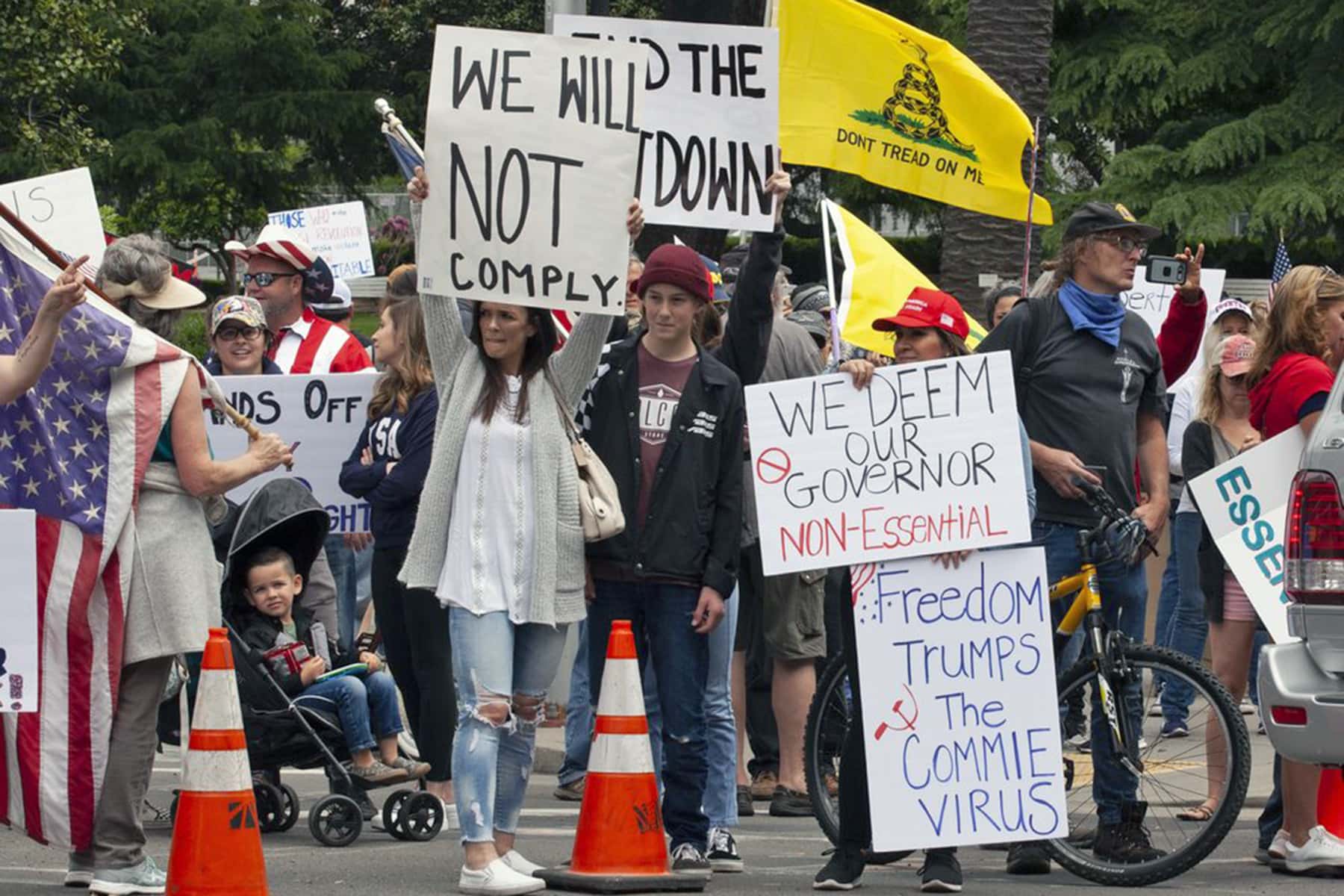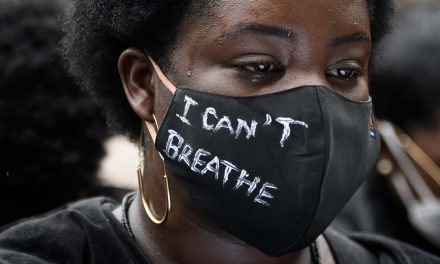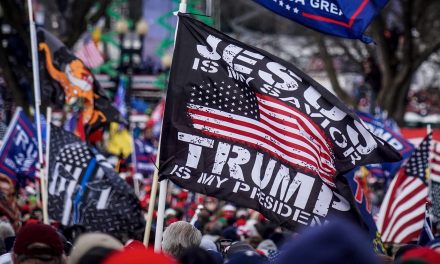
It is understandable that people who are out of work during the pandemic are getting restless. In fact, plumbers, electricians, and HVAC and janitorial staff are allowed to operate as “critical trades” under “Safer at Home” order by Governor Tony Evers.
But it is not clear that the governor has the power to make customers let heating installers into their homes, or for that matter, to quickly ramp up business and restore our economy to health as the toll of the virus continues to mount.
But Governor Evers, like other Democratic governors around the country, has become a convenient target. Republicans are doing their best to weaponize people’s weariness with COVID-19 and turn it against the Democratic officeholders who are making policy to try to control the deadly outbreak. The word “tyranny” keeps coming up.
In its legal brief supporting the Legislature’s appeal to the State Supreme Court to overturn Safer at Home, the Wisconsin Institute for Law & Liberty claims the shutdown order brings our state “perilously close” to tyranny. Like the anti-shutdown protests, the legislators’ lawsuit, in which the Supreme Court will hear oral arguments on May 5, is more of a temper tantrum than a coherent legal case.
University of Wisconsin Law School professor Miriam Seifter, who co-authored an amicus brief on behalf of legal scholars defending the Evers administration’s response to the pandemic in the Supreme Court case, explains why legislative leaders’ argument that the Safer at Home order represents a “czar-like” usurpation of legislative authority by the executive is off-base.
For one thing, the Legislature itself explicitly gave the head of the Department of Health Services the statutory authority to “authorize and implement all emergency measures necessary to control communicable diseases.”
And delegating this sort of emergency authority to the executive branch is commonplace across the country. Different states have taken different approaches to shutdowns to control the coronavirus pandemic, each according to its own laws, “but in every state it’s an executive function,” Seifter, an expert in administrative law and separation of powers, explains.
“Every state has empowered some sort of executive official to do the evolving, interpreting, real-time work of adapting to a public health crisis.”
This is not tyranny. It’s the way the balance of powers works.
The Legislature makes the laws, and the executive carries them out — including Chapter 252, the law the Wisconsin Legislature passed giving the state’s top public health official the power to issue orders to stop the spread of an infectious disease.
As Seifter and her colleagues write in their brief:
“In the throes of a grave public health crisis, the Legislature asks this Court to gut a statute that it passed and to nullify an executive order that aims to abate the worst epidemic to hit this country in more than a century. The Legislature frames this extraordinary request as necessary to respect the separation of powers. The opposite is true. Flouting separation-of-powers principles, the Legislature seeks to meddle in the implementation of the law it wrote.”
The law in question “is far from unique,” Seifter and other legal scholars point out. “Public health statutes across the nation, including Wisconsin’s Chapter 252, identify epidemics as a threat and authorize the executive branch to respond promptly and vigorously.”
That is because the legislative process is typically too cumbersome for the full range of nimble, fast-paced responses required in a pandemic, Seifter explains.
“That definitely doesn’t mean the Legislature can’t or shouldn’t pass new laws,” Seifter added. “Legislation is entirely proper during a pandemic on a whole host of issues, including things like support for individuals and businesses and other responses to an outbreak’s lasting consequences. But the day-to-day and week-to-week calibration of disease management is typically done by executive actors.”
No one is stopping the Legislature from passing laws, and that’s not what they’re complaining about in their lawsuit. Instead, the GOP legislative leaders argue that the Safer at Home order had to go through the regular administrative rule-making process.
Administrative rule-making “is a complicated, time-consuming, cumbersome process” that, in the best-case scenario, can take 20 days, said attorney Jeffrey Mandell, who wrote an amicus brief supporting the Evers administration on behalf of the Wisconsin Public Health Association, the Wisconsin Nurses Association, the Wisconsin chapter of the American Academy of Pediatrics and other healthcare groups.
“If there are objections, or other hiccups, it can last much much longer,” Mandell added, “even for a so-called emergency rule.”
That timetable is incompatible with the need for a fast, flexible public health response to the pandemic, the medical authorities’ brief points out: “To take just one recent example, on April 6, Brown County had 39 confirmed cases of COVID-19. Twenty days later, on April 26, that number was 776.”
While the administrative rules committee spends weeks holding hearings on the shutdown and reopening of regular business and public gatherings, and allows revisions based on individual members’ objections, the toll of the virus could continue to mount. Other amicus briefs supporting the governor and DHS, on behalf of citizens from all corners of the state, address the human cost of the Legislature’s effort to quash Safer at Home.
Voces de la Frontera, the immigrant-rights group, has worked closely with the meat packers in Brown County who are experiencing the worst outbreak in the state. Many of them are immigrants and members of Voces, and are worried about the particularly high risk they face, states a brief joined by 24 nonpartisan advocacy and community groups, Native American tribes and labor organizations from throughout Wisconsin.
In Milwaukee County, the same brief points out, African Americans constitute 26% of the population, yet as of April 8, accounted for 69% of all COVID-19-related deaths and twice as many positive tests for COVID-19 compared to whites.
“It is astonishing to me, as we look at the data suggesting that African Americans are tested less but are dying more than any other race, that people are now pleading to open the state back up,” Rev. Dr. Marcus Allen, Pastor, Mt. Zion Baptist Church in Madison states in a brief filed by Wisconsin Faith Voices for Justice and supported by the Wisconsin Council of Churches and dozens of pastors, priests, rabbis and other religious leaders.
“I don’t see how anyone, including judges, can have their thought process unaffected by the positions laid out in the amicus briefs.” said Doug Poland, an attorney who worked on the brief by community groups on the human cost of lifting Safer at Home throughout the state.
And, despite the Republicans’ endorsement of the idea of a partial reopening of the state in rural areas while keeping Safer at Home in place in cities, the threat is just as great for rural residents. “That’s part of the terrifying thing for those of us that are infectious disease experts, and experts in public health,” said Dr. Jim Conway a professor of pediatrics at the University of Wisconsin. All it takes is for someone who is infected to travel to an area that hasn’t had any COVID-19 cases yet for cases to spike. Even having different polices in different states is worrying, said Conway. He points to the reopening of golf courses in Wisconsin, which could draw Illinois golfers across the border as an example of a dubious idea.
So what is the Legislature doing?
In Wisconsin, the GOP temper tantrum over Evers’ executive authority has been going on for a long time. It started way before COVID-19 and Safer at Home, when Democrats won every statewide office in 2018. Because of gerrymandering, the Republicans retained control of both houses of the state legislature, and they used that power to ram through a series of laws in the lame-duck session, delegating executive authority to themselves.
Part of that power grab was an extra dose of legislative control over rule-making authority. And that is why the current GOP lawsuit seeking to undermine Safer at Home is all about administrative rules.
“There’s a long-running debate about whether and to what extent legislatures should be able to play a role in the rule-making process,” Seifter said.
One of the first things students in her administrative law class learn is the famous U.S. Supreme Court case, INS v. Chadha, which held that it was unconstitutional and violated the separation of powers for one house of Congress to strike down a decision of the executive branch – not unlike what the Wisconsin Legislature is trying to do with the Safer at Home order.
The idea behind that case is that “if the Legislature wants to change the legal status quo, it has to go through the legislative process,” Seifter explained. “Wisconsin has been unusual in how far it has gone in allowing a legislative committee to suspend a rule that would otherwise go into effect.”
Part of the lame duck power grab was an effort to allow the Legislature to not only suspend administrative rules, but to make the suspension permanent. That power is the subject of a different case that is still before the state Supreme Court, SEIU v. Vos.
All of this explains why the Legislature, in its emergency appeal to the Supreme Court, is arguing that, because it applies to the whole state, the Safer at Home order is really an administrative rule — and something that must be controlled by a Legislative committee.
It is their best shot at seizing more power during the pandemic — part of the whole temper tantrum/power grab. But the actual statutory language of Chapter 252 says the head of DHS “may promulgate and enforce rules or issue orders for guarding against the introduction of any communicable disease into the state, for the control and suppression of communicable diseases, for the quarantine and disinfection of persons, localities and things infected or suspected of being infected by a communicable disease.” And, it explicitly adds, “Any rule or order may be made applicable to the whole or any specified part of the state.”
A statewide shutdown order is unusual, Seifter pointed out, in that it “might have to apply to the whole population for some period. That’s a little different from your typical order in more ordinary subject areas.”
But it makes perfect sense in a pandemic. Broadly speaking, rules provide a general or long-standing framework that could apply across different situations. Orders are more targeted to specific problems – or outbreaks.
You can imagine why a legislature would write a law that allows an agency to issue a statewide order in those rare circumstances of a statewide health crisis. “It would be surprising if the statute allowed an agency to respond quickly through orders for localized outbreaks, but required it to use a less time-sensitive approach when an outbreak is so bad that the whole state is affected,” which is essentially what the Legislature is arguing, Seifter added.
It is a weak argument, driven by politics and pique, not a serious interest in the public welfare. Let’s hope, for all of our sake, that on the Supreme Court, cooler heads prevail.
Donate: Wisconsin Examiner
Help spread Wisconsin news, relentless reporting, unheard voices, and untold stories. Make a difference with a tax-deductible contribution to the Wisconsin Examiner













